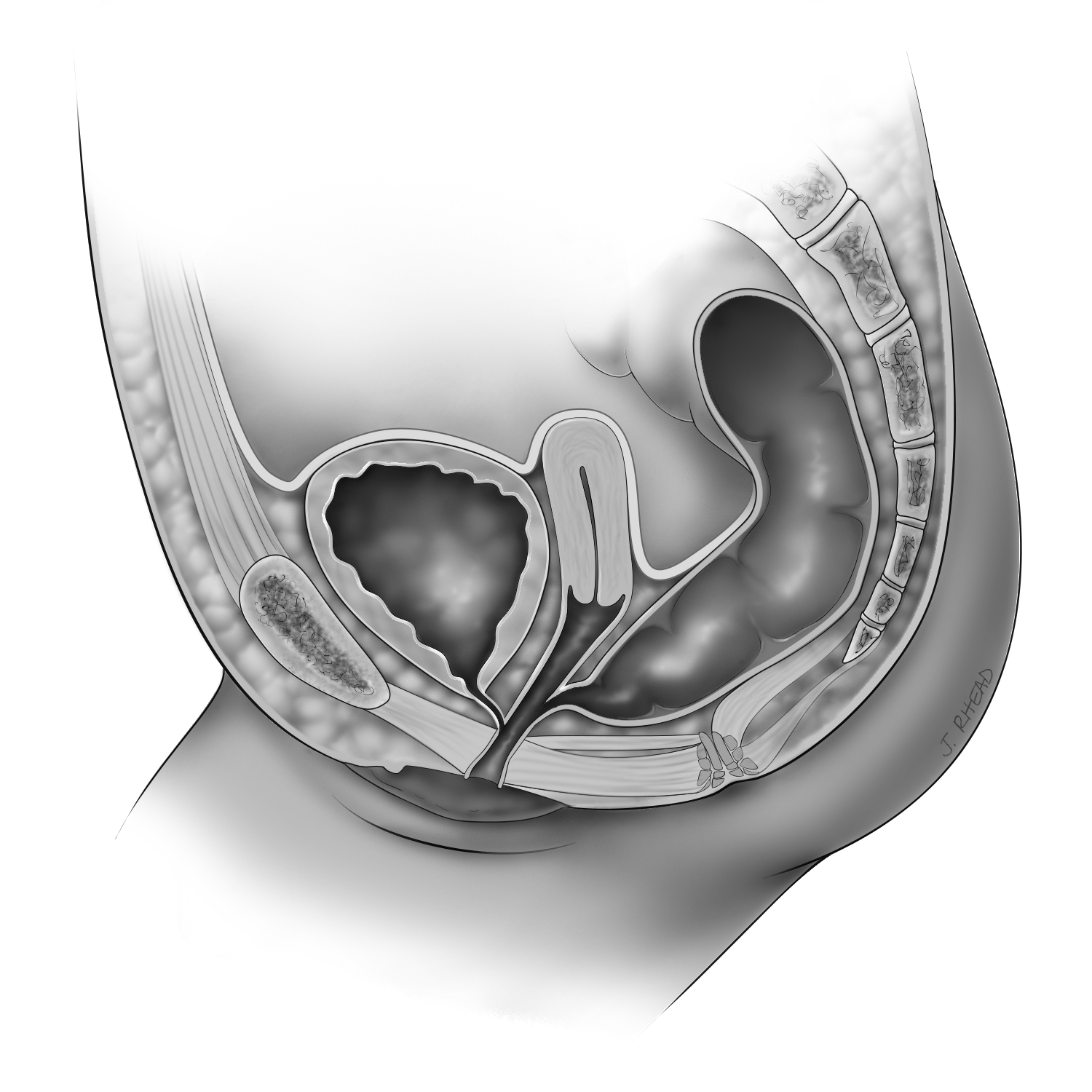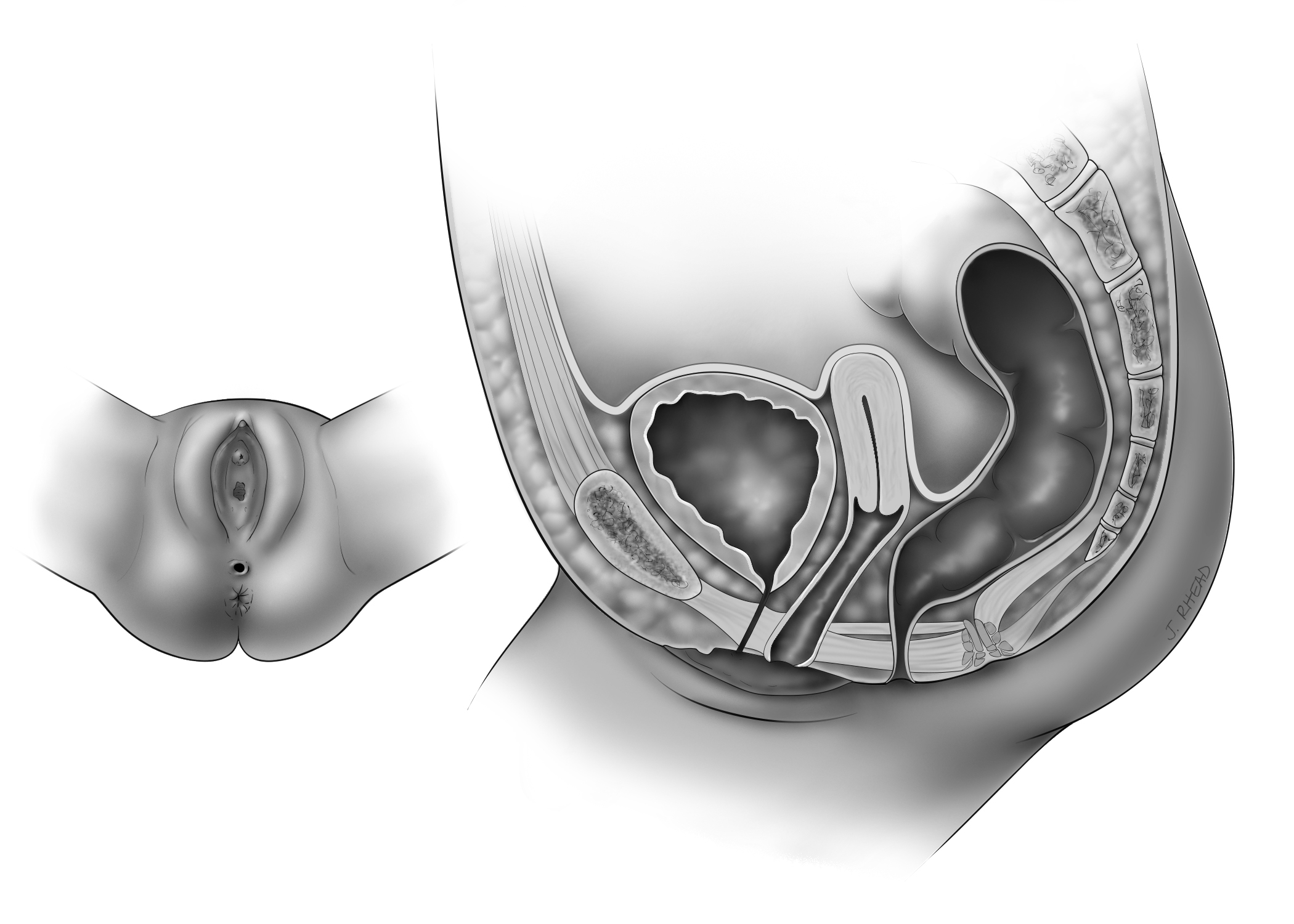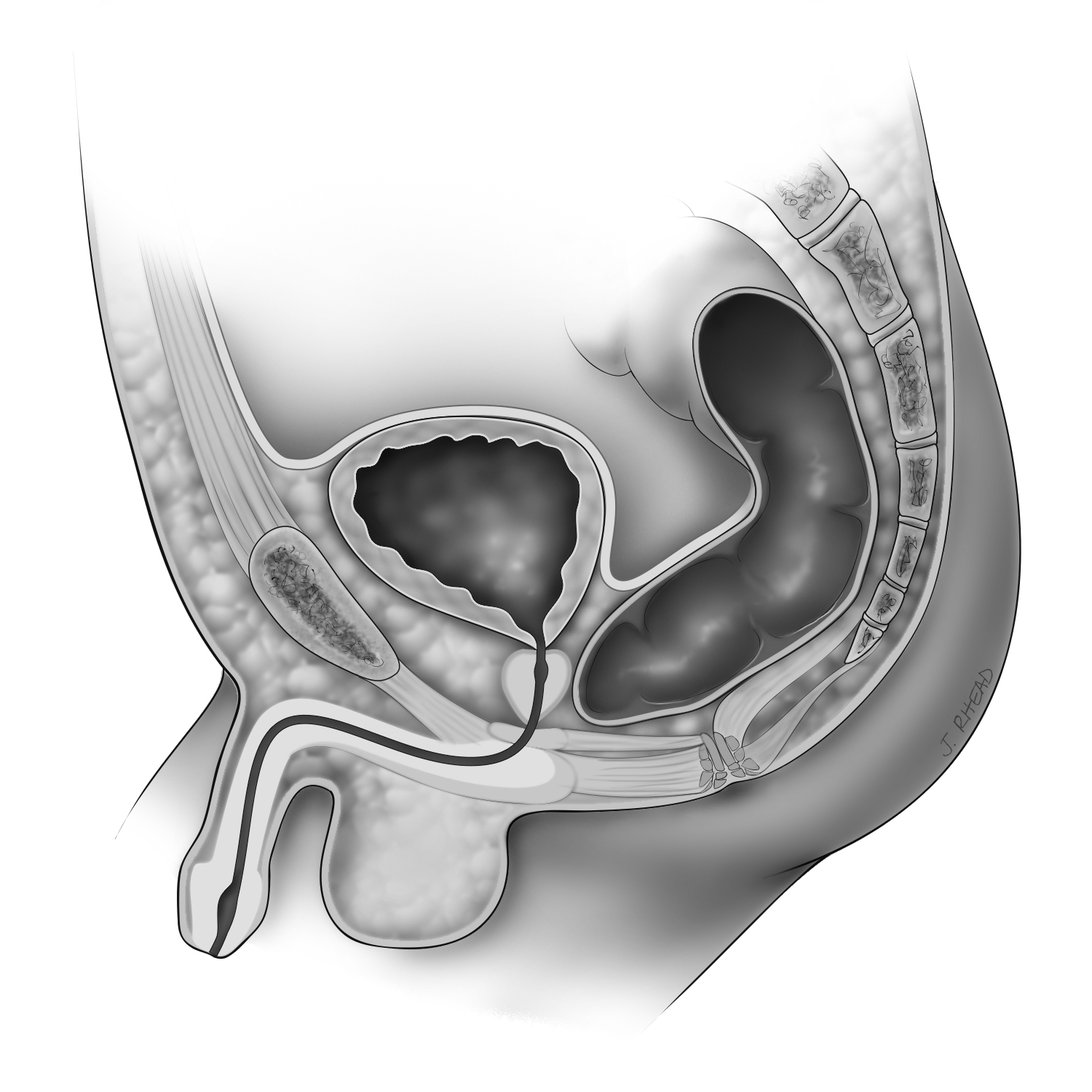An anorectal malformation (also called imperforate anus) is a birth defect that affects the development of the rectum and anus. Development of the urinary structures, and genital tract may also be affected. This is accompanied by abnormal formation of muscles and nerves of the pelvic floor that control emptying of stool.
Anorectal malformations involve a wide spectrum of defects. Imperforate anus is when there is no opening at the end of the digestive tract, where the anus is normally located. The rectum (the end of the colon) may end in a closed pouch in the body, or it may connect to the genitourinary tract; this is called a fistula. Sometimes the anus is small and in an abnormal position on the bottom, which prevents natural passage of stool; this is called an anterior anus or perineal fistula. A persistent cloaca is a complex malformation in which the rectum, vagina, and urinary tract meet in a common channel. In children born with cloaca, only one opening will be visible in the perineum compared to the normal anatomy which has 3 separate openings.
Associated Anomalies
Children born with an anorectal malformation may have other problems associated with the condition.
VACTERL
Children who are diagnosed with VACTERL usually have 3 or more anomalies of the structures listed below:
- Vertebral: Bones that make up the spine and sacrum (tailbone)
- Anus: Imperforate anus
- Cardiac: Heart
- Trachea/ Esophagus: windpipe/tube that connects mouth to stomach
- Renal: Kidneys
- Limbs: Arms and legs
Tethered Cord
Tethered Spinal Cord is a cord that is bound down or restricted. The tethered spinal cord cannot move freely as the child bends and moves about.
Sacrum and Spine Anomalies
The sacrum is the large triangular group of bones at the base of the spine. Normally 5 bones make up the sacrum. The size and number of vertebrae in the sacrum will help to determine prognosis of urinary and fecal control. If part of the sacrum is missing or if the sacrum is absent, the nerves that control urinary and bowel function are abnormal. Missing vertebrae or parts of vertebrae may lead to scoliosis.
Congenital Defect
A congenital heart defect is a problem with the structure of the heart. It is present at birth. Congenital heart defects are the most common type of major birth defect associated with imperforate anus. The type and severity of cariac defect vary in each child.
Esophageal Atresia/ Tracheoesophageal Fistula
Esophageal atresia is a defect in which the upper esophagus ends and does not connect with the lower esophagus and stomach. A Tracheoesophageal fistula (TEF) is when the esophagus connects with the trachea.
Kidneys and Urinary Tract
Approximately 50% of children born with anorectal malformations have an abnormality of their urinary tract. The kidneys may not form normally or function properly, urine may reflux from the bladder up toward the kidneys, or the bladder may be small or not empty properly.
Internal Female Structure Anomalies
The internal female structures, also called gynecologic or reproductive structures (uterus, fallopian tubes, and upper part of the vagina), grow and develop in the fetus at the same time as the urologic and gastrointestinal system. Girls born with anorectal malformations may have abnormal development of these structures as well.
Cloaca
The rectum, urethra, and vagina fuse into a common channel, with one opening in the perineum

Perineal Fistula
The anus is located in front of where the anus is normally placed or is too small

Imperforate Anus Without Fistula
The rectum ends in a blind pouch with no opening on the bottom

Rectobulbar Fistula
The rectum connects to the urethra in a male; there is no opening on the bottom

Vestibular Fistula
The rectum opens just behind the vagina (the space between the vaginal hymen and perineal skin).

Treatment
Most babies with an anorectal malformation will need one or more operations to repair the problem. Children may also need surgery for associated malformations. The purpose of surgery is to allow a way for the stool to come out of the body. Our team of pediatric surgeons will evaluate your child and decide the best treatment option.
Outcomes
Patients with imperforate anus will be followed closely throughout childhood and adolescence, with some patients being followed into adulthood. The most common problems for these children are constipation and fecal incontinence (the inability to hold stool). Other problems may involve urinary tract or renal function. At the Colorectal Center at Primary Children’s Hospital we address ongoing problems and coordinate care between specialists to manage your child’s needs. We provide a Bowel Management Program, where we work closely with you and your child to assess function and provide a way for your child to stay clean of stool and prevent accidents.
© 2018 Intermountain Healthcare. All rights reserved. The content presented here is for your information only. It is not a substitute for professional medical advice, and it should not be used to diagnose or treat a health problem or disease. Please consult your healthcare provider if you have any questions or concerns.